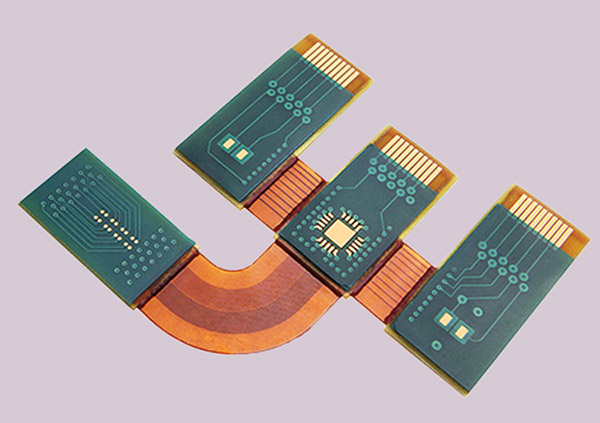In-depth analysis: What are rigid-flex boards and their application scenarios!
With the rapid development of modern electronic technology, hard-flex boards, as a special electronic material, have gradually become an indispensable part of electronic equipment manufacturing.
1. What is a hard-flex board
As the name implies, a hard-flex board combines a flexible circuit board (FPC) and a rigid circuit board (PCB) through a specific process to form a circuit board that combines the softness and bendability of FPC with the firmness and stability of PCB. The hard-flex board not only retains the flexibility and bendability of FPC, but also has the high reliability, high stability and strong electrical performance of PCB.
2. Characteristics of hard-flex boards
Soft and bendable: Due to the use of FPC materials, the hard-flex board can be bent freely within a certain range to adapt to electronic devices of various complex shapes and structures. This makes the hard-flex board have unique advantages in the fields of wearable devices, flexible displays, etc.
High reliability: The hard-flex board combines the firmness and stability of PCB and has high reliability and stability. It can work normally in various harsh environments and meet various special application requirements.
Excellent electrical performance: The hard-flex board adopts advanced electrical design technology and has excellent electrical performance. It can meet the needs of various complex circuits and provide stable and reliable electrical connections for electronic devices.
3. Application scenarios of rigid-flex boards
Wearable devices: With the popularity of wearable devices, the requirements for the softness and bendability of electronic materials are getting higher and higher. Rigid-flex boards are ideal for wearable devices because of their soft and bendable characteristics. They can make the device light, comfortable and have a good user experience.
Flexible display screens: As an emerging display technology, flexible displays have extremely high requirements for materials. Rigid-flex boards are one of the key materials for flexible displays because of their softness and impact resistance. They can achieve morphological changes such as bending and folding of display screens, bringing users a new visual experience.
Aerospace: In the aerospace field, electronic equipment needs to withstand extreme environmental conditions, such as high radiation and high pressure. Rigid-flex boards can meet these special needs with their high temperature resistance and high reliability. They can provide stable and reliable electrical connections for aerospace electronic equipment to ensure the normal operation of the equipment.
With the continuous advancement of electronic technology and the continuous expansion of the market, the application fields of rigid-flex boards will be more extensive. In the future, rigid-flex boards will play a more important role in wearable devices, flexible displays, aerospace and other fields. At the same time, with the continuous improvement and optimization of manufacturing processes, the performance of rigid-flex boards will be further enhanced, providing more solid support for the development of electronic equipment.




